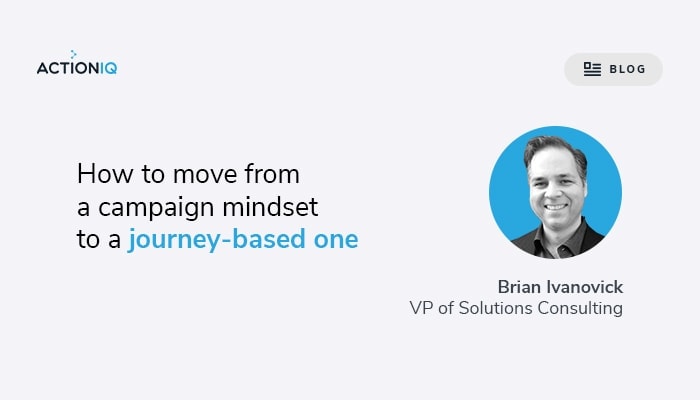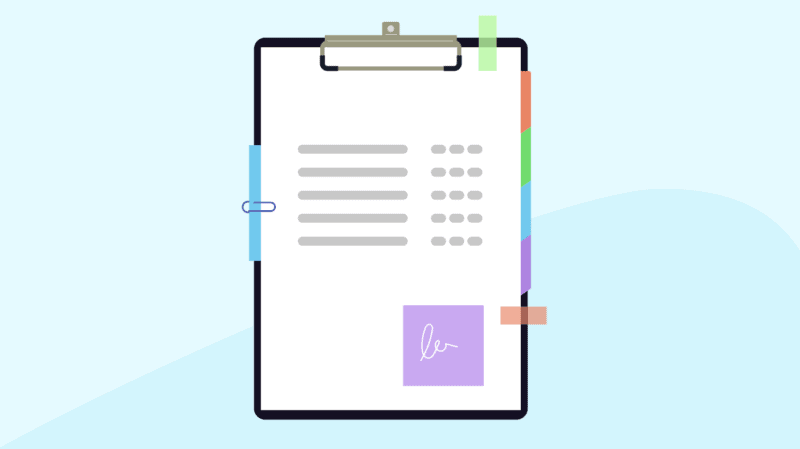How to Start Thinking in Customer Journeys

“That’s stupid,” my VP of marketing said when, back in 2009, I mentioned the term “customer decision journey,” which I’d just read in a McKinsey article. The VP was known for having strong opinions and he didn’t hold back on this one. He agreed with the spirit of the term but didn’t think it would be widely adopted. It’s telling that I can remember still remember when I first heard that term. My VP was wrong—McKinsey had gotten this one right. Customer journeys are here to stay.
When The Customer Decision Journey was published ten years ago, only the most forward-thinking brands were rethinking their assumptions about how their customers interacted with them. The majority focused on creating traditional campaign, and struggled to do the most basic personalization.
How times have changed. Most marketers are now starting to think about how to move from a campaign mindset to a journey-based one. Salesforce’s CMO has said the end of the marketing campaign is near, and brands need to focus instead on continuous storytelling.
How the heck do you implement this “continuous storytelling” approach? Marketers are now turning to the idea of customer journeys. The trouble is, very few of them know how to transition from campaign to journey-based thinking. The purpose of this article is to help marketers migrate to a journey-based approach. In it, we’ll outline the basic steps for getting your journey-based program off the ground.
Step 1: Define your Customer Lifecycle Stages
The first step in the process is to map out your Customer Lifecycle stages. This should be straightforward, as most brands already think in these terms. Begin the process by specifying what you want the ideal journey look like. For a B2C retailer, these might be as simple as Acquire, Activate, Repeat, Grow, and Retain. For a B2B software company, you may use SiriusDecisions or some other framework. Of course, almost none of your prospective or current customers will precisely follow these journeys, but it’s the critical first building block when creating internal alignment.
Step 2: Map KPIs to Lifecycle Stages
The next step is to map KPIs to each stage of the customer lifecycle. If you do this well, you’ll take a data-driven approach to understand what KPIs drive lifetime value. For example, a number of retailers talk about time to second purchase as a critical KPI if you want to grow LTV. In hospitality, return rate and share of travel-related spend are strong indicators of long-term loyalty. Frequency of Usage is one of the main KPIs in financial services, being a leading indicator of future increases in the Share of Wallet.
Once you settle on the main KPI you are planning to impact with your journey, define what success looks like. In the retail case, if you decide to focus on driving the second purchase, what categories, timeframes and dollar amounts would be representative of a desired customer behavior? These questions should ideally be answered through data analysis of historical LTV drivers (either by internal analytics or outside consulting teams).
Step 3: Define a Secondary KPI for Each Stage
Not every one of your customers is going to take the action that you’d like them to. They have their own motivations, and many times those motivations are at odds with your commercial interests. It’s counterproductive to hammer one of your customers with messages all pointing them to help you achieve your primary KPI. Customers will get frustrated and and you’ll erode some of your brand value.
Instead, determine a secondary KPI for each stage. If that new customer isn’t going to engage in a quick follow-on purchase, then your goal may be to educate them on your offering and get them to browse additional categories. If you’re in the subscription business and they’re not upgrading plans, then maybe you want them to engage with your community. Whatever your situation may be, you need to consider how you want to treat customers so they’re not constantly inundated with commercial offers. What are you doing to build goodwill? Consider selecting secondary KPIs that are leading indicators of someone achieving the primary KPI down the road. Define these KPIs and determine which audiences should receive these experiences.
Step 4: Setup Journeys & Measure the Results
The foundation of any good customer journey strategy is employing Test & Control, to understand if the path you are sending your customers on results in incremental improvements in your KPIs. If you are just starting your journey work, you should hold out a certain percentage of your customers from it, and let them continue getting your business-as-usual communications and use that as your control. This approach enables you to measure behaviors of customers you are not sending on the journey and compare it to the journey outcomes.
You can also test alternative journeys at the same time in an A/B format to continue optimizing. Whatever path you choose, you must always be clear on what you are testing and how you are measuring the success of your efforts. If you don’t have someone on your team with a statistical background, then hire someone or use an outside consultant. It’s very easy to run poorly designed tests that result in false positives or false negatives.
Step 5: Share Results to Build Momentum
Don’t forget to host regular meetings with stakeholders and leadership to share successes, learnings, and next steps from your tests. These meetings help build momentum for continued investment in journeys and personalization, an invaluable outcome given the people, processes, and technologies needed to make it successful for the long-run.
We hope that’s enough to get you started on the path from thinking in campaigns to thinking in journeys. Let us know if you have any other best practices to share.
To schedule time with an industry expert for tailored guidance on how to migrate to customer journeys and an action plan that meets your objectives, visit our Meet The Experts page to learn more.





